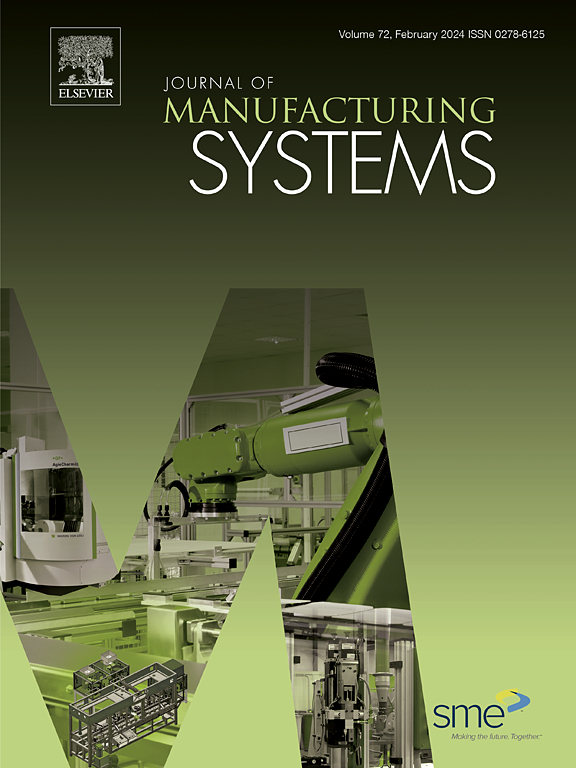‘Genetic exploration’ of metal forming processes through information absent and fragmental data processing
IF 12.2
1区 工程技术
Q1 ENGINEERING, INDUSTRIAL
引用次数: 0
Abstract
Over 160,000 engineering materials and nearly 90 % (wt%) of products made from metals are manufactured by metal forming processes. Voluminous metal forming data are proliferated daily at an ever-greater scale, and collected from sensing networks and experimentally verified simulations, facilitating the scientific understanding of digital manufacturing. To date, limited research has approached metal forming from the perspective of data, particularly given that most datasets are ‘information absent’ that lack essential information, including data description, quality or condition, or essential features, for a single or several data points, or a specific dataset or database. Furthermore, data collected by sensing networks are most likely to be categorised as ‘fragmental data’, encompassing only a few (e.g., 1–2) essential pieces of information. This phenomenon is mainly due to limitations of data collection capabilities and data privacy, and hinders the extraction of insightful information. Tackling these long-standing challenges requires an emerging scientific approach combining manufacturing and data science knowledge. Here, following thermo-mechanical principles, an Evolutionary Binary (EB) algorithm was developed to process information absent (meta)data, yielding a highly efficient recognition of missing geometric features for metal formed products with nearly 95 % accuracy using sparsely labelled data points (≤1 %). By leveraging this technology, unique digital characteristics (DC) were identified for over 140 manufacturing processes. The DC are defined as the visualisation of manufacturing (meta)data incorporating essential information spanning design, manufacturing and application stages of manufactured products. This leads to the establishment of digital characteristics space (DCS) that provides access to the up-to-date and information-rich manufacturing DC. Using EB algorithm and taking DCS as an alignment reference, the origins of naturally unattributed fragmental data (minimum length of 25 data points) were successfully identified with overall over 80 % accuracy, and reached approximately 93 % with length of 50 data points.
求助全文
约1分钟内获得全文
求助全文
来源期刊

Journal of Manufacturing Systems
工程技术-工程:工业
CiteScore
23.30
自引率
13.20%
发文量
216
审稿时长
25 days
期刊介绍:
The Journal of Manufacturing Systems is dedicated to showcasing cutting-edge fundamental and applied research in manufacturing at the systems level. Encompassing products, equipment, people, information, control, and support functions, manufacturing systems play a pivotal role in the economical and competitive development, production, delivery, and total lifecycle of products, meeting market and societal needs.
With a commitment to publishing archival scholarly literature, the journal strives to advance the state of the art in manufacturing systems and foster innovation in crafting efficient, robust, and sustainable manufacturing systems. The focus extends from equipment-level considerations to the broader scope of the extended enterprise. The Journal welcomes research addressing challenges across various scales, including nano, micro, and macro-scale manufacturing, and spanning diverse sectors such as aerospace, automotive, energy, and medical device manufacturing.
 求助内容:
求助内容: 应助结果提醒方式:
应助结果提醒方式:


